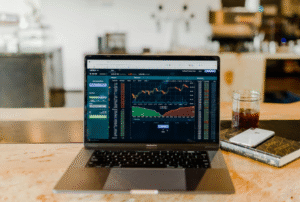When you start trading for the first time, you might feel excited and intimidated. The charts, the figures, the terminology; it’s all enough to overwhelm anyone. Jumping straight into live trading with real money sounds bold, but it can be a road to unnecessary losses. Gaining skill, confidence, and understanding takes time. One of the best things for any beginner to do is to practice before risking actual capital.
New traders often hear about demo accounts but underestimate their true value. A trading demo offers the closest thing to live markets without the stress of losing real money. It allows traders to test strategies, get familiar with platforms, and make mistakes that teach lasting lessons, all while keeping hard-earned money safe. Continue reading, and let’s understand better why every new trader should spend time on these platforms!

Learning the Basics Without Financial Risk
Trading can be unforgiving for those who rush in unprepared. Even with endless guides and tutorials, experience counts more than theory. A demo account helps traders gain hands-on practice. Orders can be placed and charts can be analyzed in real time. Mistakes can be studied and corrected.
This safe environment helps beginners master the basics: setting stop-losses, understanding leverage, and reading candlestick patterns. Real market conditions provide authentic practice. Without a demo, beginners often learn these lessons the hard way.
Building Confidence Through Practice
Confidence matters as much as knowledge. Many new traders freeze up when real money is on the line. Fear of loss clouds judgment, and emotional decisions lead to poor trades. By practicing in a risk-free setting, traders build the mental resilience needed for live markets.
Making a mistake with virtual funds feels different than losing real money, but the psychological exercise prepares traders for the real thing. Seeing how a strategy plays out over time boosts trust in the process. By the time real money is involved, a trader has already faced ups and downs in a controlled way.
Testing Different Strategies
No single trading strategy works forever. Markets shift, trends change, and a method that works today may fail tomorrow. A demo account gives the freedom to test various approaches. Scalping, swing trading, and position trading are the things you can explore without fear.
Traders can track what suits their personality and schedule best. Some thrive on quick trades; others prefer a long-term position. A demo helps spot strengths and weaknesses before the stakes get high. Adjustments become easier, and the best methods can be refined.
Learning Platform Tools and Features
Trading platforms often come packed with tools: chart indicators, drawing instruments, automated orders, and more. For a beginner, this can feel like flying a plane for the first time. Without practice, it’s easy to push the wrong button or set the wrong order type.
Spending time on a demo account allows new traders to get comfortable. They learn how to place different orders, set alerts, use analytical tools, and customize their workspace. This technical fluency reduces errors that could cost real money later. The platform becomes an ally instead of a source of confusion.
When to Switch to Live Trading
Practicing forever isn’t the goal. A demo account is a tool to build skills, but it shouldn’t become a comfort zone. Knowing when to go live depends on several factors. Traders should switch when they have a clear strategy that consistently works in practice. They should also feel calm and decisive under pressure. If revenge trading, over-leveraging, or panic exits still happen frequently, more time is needed.
Switching to live trading should be gradual. Starting small with real money helps bridge the gap between practice and reality. Mistakes will still happen, but they will likely be smaller and easier to recover from. By that point, traders have built enough experience and confidence to stay focused on long-term growth rather than short-term gains.
Jumping straight into live markets without preparation often ends in regret. A trading demo gives every new trader a chance to learn, fail, adapt, and grow without risking real money. Anyone serious about trading should see a demo account as a training ground, not a toy. Take time to practice. Test ideas, learn from mistakes, and refine a strategy. That way, when the switch to live trading finally happens, the odds are stacked more in favor of success. The markets will always be there, but a well-prepared trader will be ready for them.
